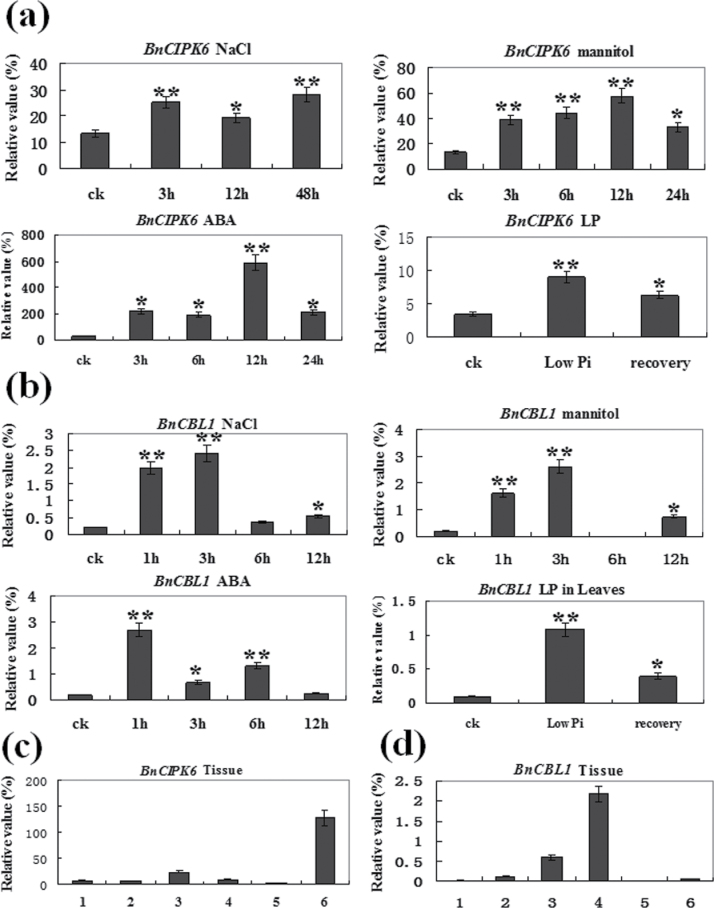Fig. 2.
Quantitative RT-PCR analysis of BnCIPK6 and BnCBL1 in Brassica napus. (a) Expression of the BnCIPK6 gene in roots of B. napus under NaCl, mannitol, ABA, and low phosphate stress treatments. Total RNA was isolated from roots of 7-d-old seedlings treated with 150mM NaCl for 3, 12, and 48h, 200mM mannitol for 3, 6, 12, and 24h, 100 µM ABA for 3, 6, 12, and 24h, and low phosphate (10 µM phosphate for 72h, then recovered for 72h in MS medium with 1.25mM phosphate), respectively. (b) Expression of the BnCBL1 gene in roots of B. napus under salt stress, osmotic stress, and ABA treatment, and in leaves of B. napus under low phosphate stress. Total RNA was isolated from roots of 7-d-old seedlings treated with 150mM NaCl, 200mM mannitol, 100 µM ABA for 1,3, 6, and 12h and low phosphate (10 µM phosphate for 72h, then recovered for 72h in MS medium with normal phosphate content), respectively. (c) BnCIPK6 and (d) BnCBL1 expression in B. napus tissues. Total RNAs were isolated from roots (1), hypocotyls (2), cotyledons (3), stems (4), leaves (5), and flowers (6) of B. napus, respectively. Relative value of BnCIPK6 and BnCBL1 expression was shown as a percentage of BnACT2 expression activity; ck, untreated roots (control). Mean values and standard errors (bar) were shown from three independent experiments. Independent t tests for equality of means demonstrated that there was significant difference (*P value <0.05) or very significant difference (**P value <0.01) between untreated (control) and treated roots or leaves.

